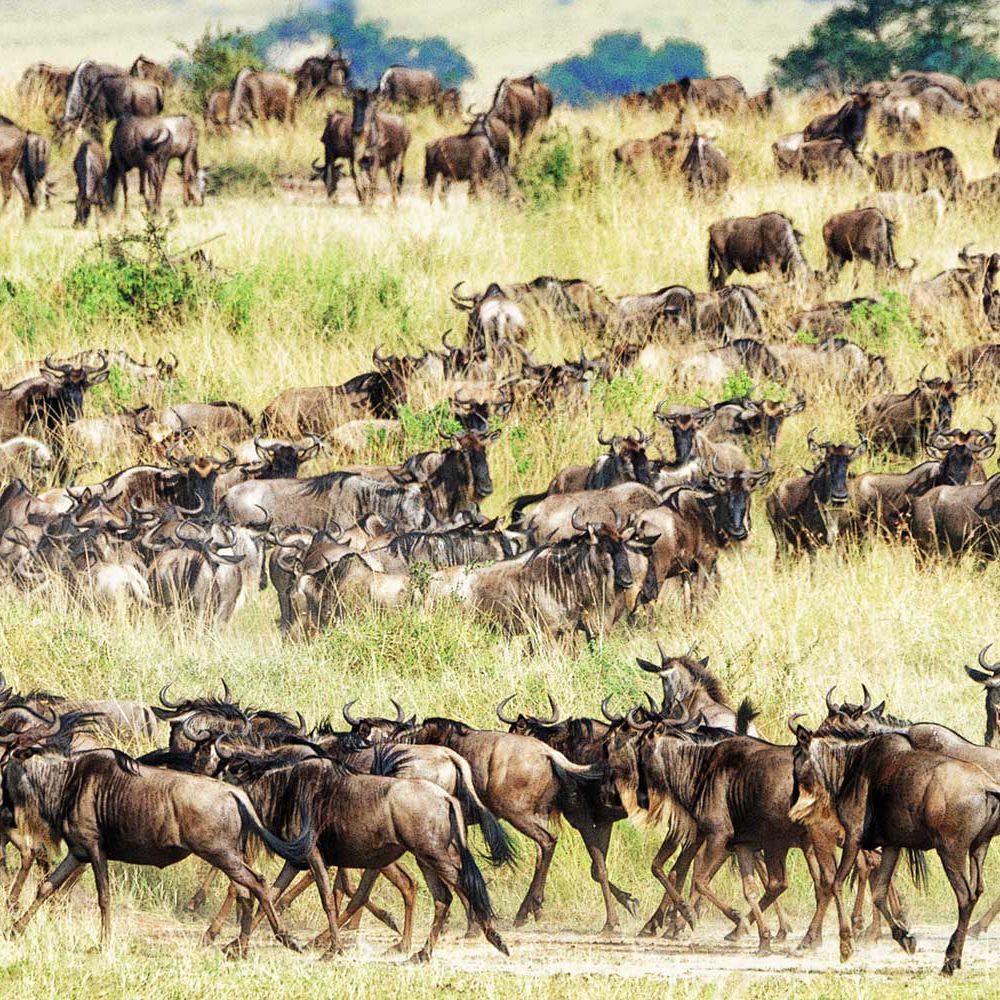
Every year, some 2 million animals travel through Tanzania and Kenya, driven by seasonal rain and drought in what is known as the Great Migration. About 1 million wildebeest and 200,000 zebras comprise the largest populations of the migrating herds, followed by gazelles. While the exact timing of the migration varies from one year to the next and cannot be forecast with any certainty, we’ve provided the general movement patterns of the animals throughout the year below.

Important Note: This is a general explanation of the migration route. The beginning of the Great Migration cannot be predicted, as it depends on each year’s rainy season and other variables. Vacations To Go cannot be held responsible for climactic fluctuations of any kind that cause the migration to vary from this description.
December to April: During this period the herds of wildebeest and zebra roam across the extended plains of the southern Serengeti and the northern Ngorongoro Conservation Area in Tanzania. The period during which calves are born typically lasts from late January through mid-March, with the largest number of calves born in a 14 to 21-day stretch in February. During this time, hundreds of thousands of wildebeest calves are born. Predators thrive on the abundance of young calves, and sightings of lions, cheetahs and hyenas are frequent at this time of year.
May to July: In May, the rainy season ends, the plains dry up in May and the animals start to move west and then north in search of better pastures. The scattered herds eventually congregate to form columns up to 25 miles long as they begin their journey from the south to the western and northern Serengeti. Predators — which are territorial rather than migratory creatures — hunt as the enormous herds pass through their terrain. The wildebeest mating season also occurs during this time, from late May to early June. As wildebeest and zebra navigate northward, they must traverse the Grumeti River, where hungry crocodiles await. June through July is the best time to see the migration in action in the western and northern Serengeti.
July to November: During this period, the plains of the western Serengeti dry up and vegetation is depleted so the migration must go on. Between July and mid-August, the wildebeest, zebras and gazelles depart the Serengeti and Tanzania, cross the Mara River (full of crocodiles), and enter Kenya’s Masai Mara, where verdant pastures await.
A visit to the Masai Mara National Reserve when the migration arrives in August or September can make for a remarkable experience due to the variety of species and the vast number of animals. The herds disperse across the grasslands of the Masai Mara until October or November, when the start of the short rainy season prompts them to start their trek south, back to their breeding grounds in the Serengeti and Ngorongoro Conservation Area.